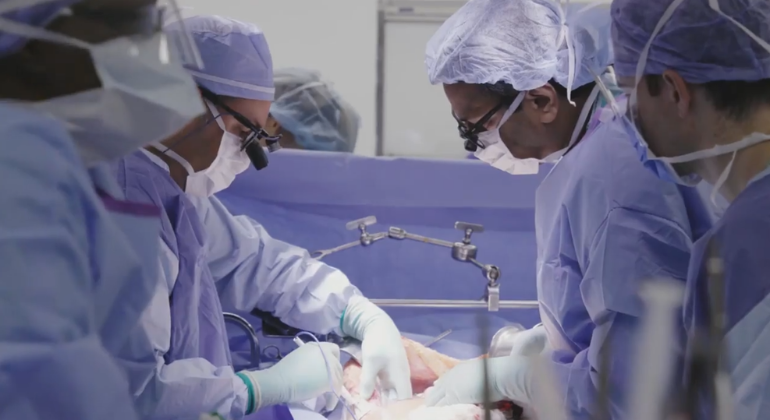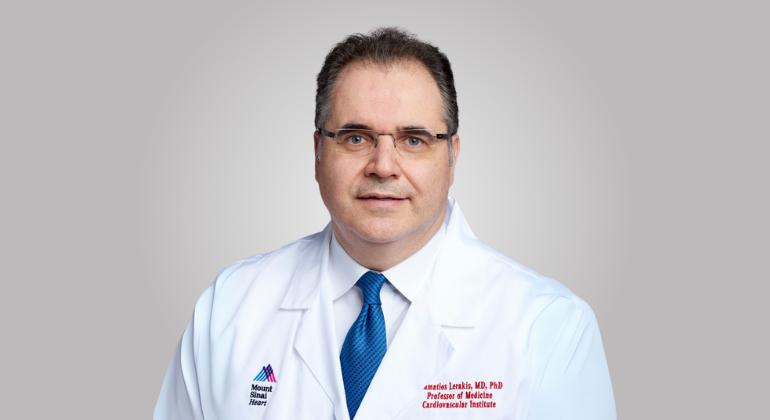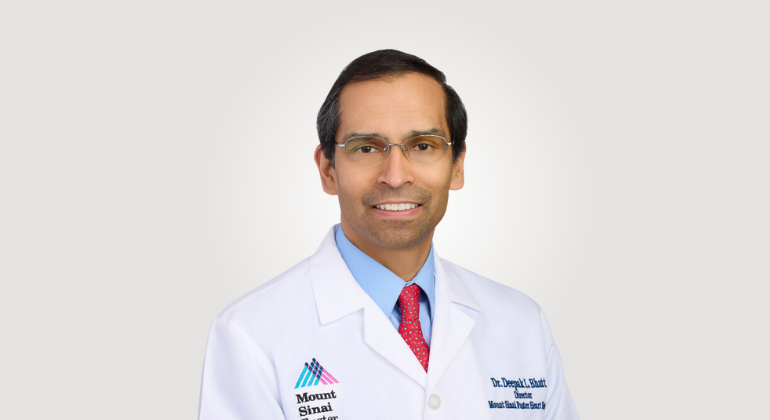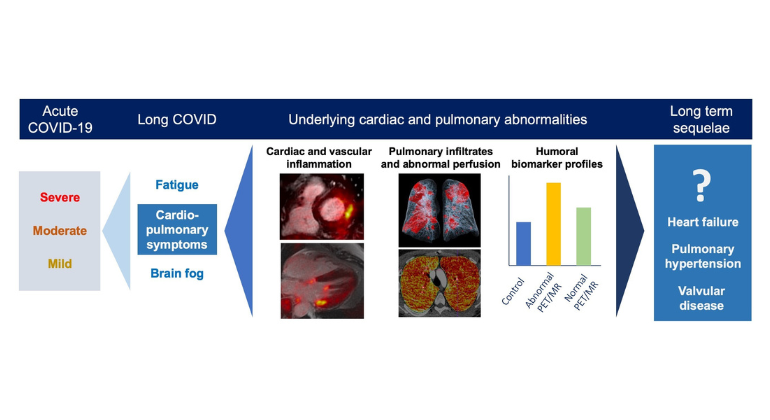Researchers Investigating How to Make PET Imaging Even Sweeter
Mount Sinai Heart testing new sugar-based tracer to help in the cardiovascular imaging hunt for inflamed high-risk, vulnerable artery plaques before they rupture.
An international research team led by Mount Sinai Heart at Icahn School of Medicine at Mount Sinai, is testing its novel sugar-based tracer contrast agent to be used with positron emission tomography (PET) imaging to help in the hunt for dangerous inflammation and high-risk vulnerable atherosclerotic plaque inside vessel walls that causes acute heart attacks and strokes.
Their findings, reported Jan. 12 in Nature Medicine, investigate the possible advantage of the proposed imaging agent, fluorodeoxymannose (FDM) sugar-based tracer in comparison to fluorodeoxyglucose (FDG), the current glucose-based tracer widely-used in patients undergoing PET imaging.
"Our pre-clinical testing shows that PET imaging with the radiotracer FDM may potentially offer a more targeted strategy to detect dangerous, high-risk plaques and inflammation that may be associated with serious cardiovascular events," says Jagat Narula, MD, PhD, the principal investigator for the study who serves as Director of the Cardiovascular Imaging Program at The Mount Sinai Hospital, and Associate Dean of Global Health at Icahn School of Medicine at Mount Sinai.
Glucose forms the source of main energy supply in the human body and in the radiolabeled form FDG it has been traditionally used for the identification of atherosclerosis. Valentin Fuster, MD, PhD, the Director of the Mount Sinai Heart and Physician-in-Chief of The Mount Sinai Hospital, was one of the earliest investigators to use FDG for the detection of atherosclerosis.
A known biomarker for high inflammation in arterial plaque is the presence of an abundant level of macrophage cells. Macrophage-rich inflammation lining the artery walls filled with plaque is known to be associated with increased risk of heart attack and stroke. "Macrophage cells have a very high metabolic demand for sugars and are dependent on the exogenous source of sugars, and that's why the sugar-based tracers are able to identify the inflamed or dangerous plaques," according to Dr. Fuster.
"Although the research team's investigations of the FDM tracer shows that it performs comparably to the traditional FDG tracer, it is expected that the new sugar tracer may have an advantage to more specifically target inflammation because the plaque infiltrating macrophages develop mannose receptors (MRs)," according to Dr. Narula.
Co-author Jogeshwar Mukherjee, PhD, and his team of radiochemists at the University of California, Irvine had labeled the FDM with Fluorine-18, which like glucose enters the cells through glucose transporters. The current study results show mannose is taken up by a specific subset of macrophage cells that dwell in high-risk plaques, which have developed the mannose receptors. This may represent the theoretical advantage of FDM over the FDG tracer. These macrophages called "M2" within atherosclerotic plaques, tend to overly express MRs, and are especially common in inflamed and hemorrhagic arterial lesions.
In the study FDG and FDM were compared using PET imaging in atherosclerosis animal models. While uptake of each tracer within atherosclerotic plaques and macrophage cells were similar, according to the researchers the experimental FDM tracer showed at least a 25 percent higher FDM uptake advantage due to MR-bearing macrophages.
"The FDM binds to MR-bearing macrophages while FDG does not bind to the MR receptors. This specific binding provides clinically relevant avenue why FDM uptake in high-risk plaques should be further investigated," says study co-author Zahi Fayad, PhD, the Director of the Translational and Molecular Imaging Institute at Icahn School of Medicine at Mount Sinai. Researchers also observed FDM uptake occurred in the presence of atherosclerosis and almost none in non-atherosclerosis control models.
"We are excited about our possibly sweeter imaging breakthrough, but further research and clinical trial testing will need to confirm its potential advantage," stresses Dr. Narula.
"The labeling of FDM is cumbersome and the yield of radiolabeled material is extremely low; the labeling methodology would need to be perfected," Dr. Mukherjee cautions.
This research was funded by a research grant from the International Research Fund for Subsidy of Kyusyu University School of Medicine Alumni and the Banyu Fellowship Program sponsored by Banyu Life Science Foundation International, research grants from the foundation De Drie Lichten and the Dutch Heart Association (Dr. E. Dekker Scholarship), US National Institutes of Health (S10RR019269) from the US National Center for Research Resources, the US National Institute of Biomedical Imaging and Bioengineering (R01 EB006110) to Dr. Mukherjee, and National Institutes of Health grant (1RO1-HL68657) to Dr. Narula.
Other study co-authors include: Nobuhiro Tahara, Atsuko Tahara, and Tsutomu Imaizumi of Kurume University School of Medicine, Kurume, Japan; Cristian C. Constantinescu of University of California Irvine Medical Center, Irvine, California; Hans J. de Haas, Artiom D. Petrov, and Nezam Haider from Icahn School of Medicine at Mount Sinai; Hendrikus H. Boersma from University of Groningen, University Medical Center Groningen, Groningen, Netherlands; Masataka Nakano and Renu Virmani from Cardiovascular Pathology Institute, Gaithersburg, Maryland; Aloke Finn from Emory University School of Medicine and Medical Center, Atlanta, Georgia; Ahmed Tawakol of Harvard Medical School and Massachusetts General Hospital, Boston, Massachusetts; and Lisardo Bosca of Instituto de Investigaciones Biomédicas Alberto Sols (Centro Mixto Consejo Superior de Investigaciones Científicas–Universidad Autónoma de Madrid).
About the Mount Sinai Health System
Mount Sinai Health System is one of the largest academic medical systems in the New York metro area, with 48,000 employees working across seven hospitals, more than 400 outpatient practices, more than 600 research and clinical labs, a school of nursing, and a leading school of medicine and graduate education. Mount Sinai advances health for all people, everywhere, by taking on the most complex health care challenges of our time—discovering and applying new scientific learning and knowledge; developing safer, more effective treatments; educating the next generation of medical leaders and innovators; and supporting local communities by delivering high-quality care to all who need it.
Through the integration of its hospitals, labs, and schools, Mount Sinai offers comprehensive health care solutions from birth through geriatrics, leveraging innovative approaches such as artificial intelligence and informatics while keeping patients’ medical and emotional needs at the center of all treatment. The Health System includes approximately 9,000 primary and specialty care physicians and 10 free-standing joint-venture centers throughout the five boroughs of New York City, Westchester, Long Island, and Florida. Hospitals within the System are consistently ranked by Newsweek’s® “The World’s Best Smart Hospitals, Best in State Hospitals, World Best Hospitals and Best Specialty Hospitals” and by U.S. News & World Report's® “Best Hospitals” and “Best Children’s Hospitals.” The Mount Sinai Hospital is on the U.S. News & World Report® “Best Hospitals” Honor Roll for 2025-2026.
For more information, visit https://www.mountsinai.org or find Mount Sinai on Facebook, Instagram, LinkedIn, X, and YouTube.

Blocking a Little-Known Protein May Offer New Hope for Devastating Lung Disease
Jul 15, 2025 View All Press Releases
Mount Sinai Surgeons Perform First Heart-Liver-Kidney Transplants in New York State
May 20, 2025 View All Press Releases







